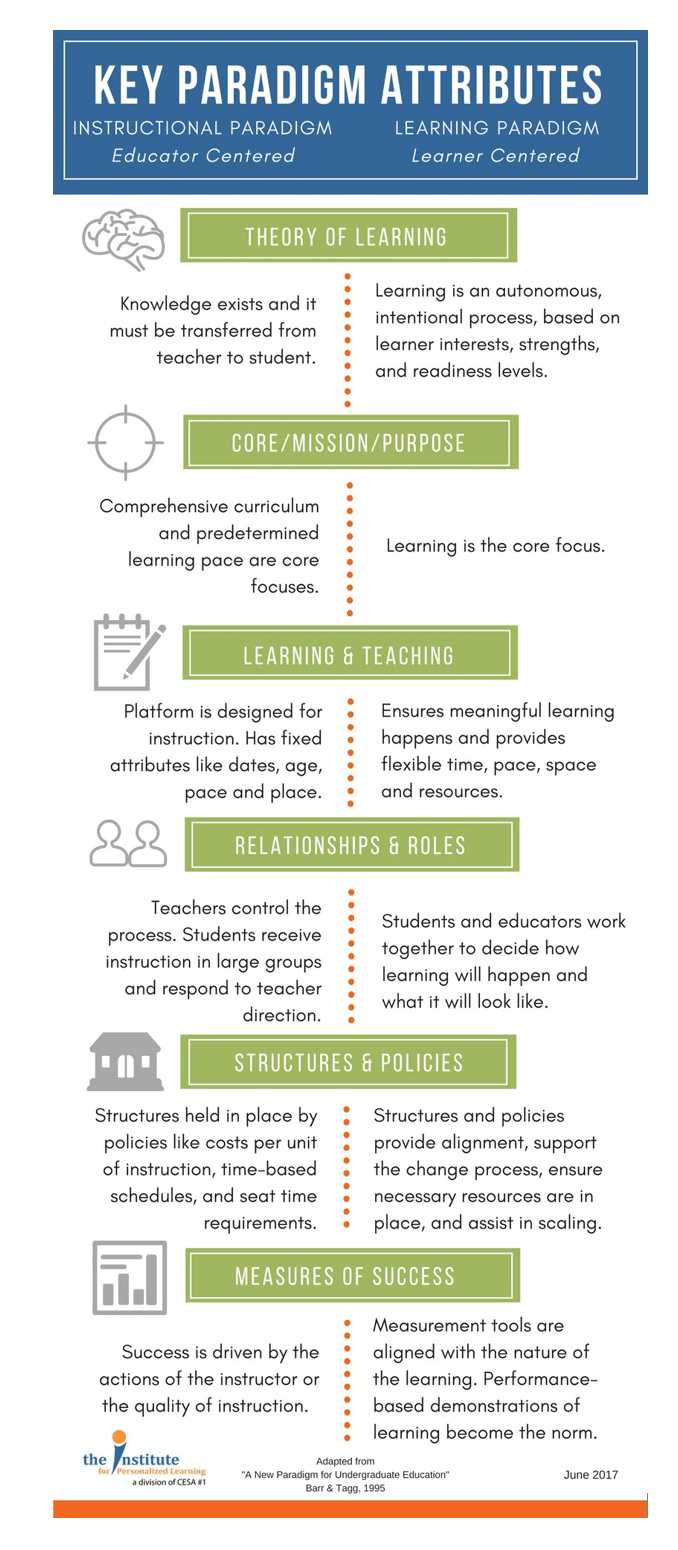Shifting Paradigms: Moving from an Instructional Paradigm to a Learning Paradigm
CompetencyWorks Blog
This post originally appeared at the Institute for Personalized Learning on June 22, 2017.
The instructional paradigm, still in place in most schools, was primarily designed to support the function of teaching, or more specifically, the delivery of information from instructor to student. For practical reasons the design favored efficiency, which led to batch processing of students, segmentation of content areas, and credits based on seat time.
More than a century of experience with instruction-driven design has proven that teaching does not always equal learning. Yet challenges to increase achievement have typically been met with more efforts to simply improve components of the instructional paradigm, rather than questioning its fundamental design. Efforts to improve achievement have also produced an ever-increasing array of accountability expectations for teachers and schools. Mandates put in place to produce “better” instructors and higher test scores have created a host of instructional interventions at the expense of authentic learning experiences.
Increasingly, the education community is recognizing that to get the achievement results we desire, and more importantly, to prepare our learners for an uncertain future, the focus must shift from an instructional paradigm to a learning paradigm. This shift in focus has launched an urgent search for approaches that will be successful under the new paradigm. Personalized learning is an ideal fit to accomplish this shift. Personalized models focus on active, participatory learning where learners are empowered to take control of their own educational pathway. The very nature of personalized learning means it will look different at each site, depending on the context. Educators may select different elements of personalized learning to focus on, but all of them share one thing – they start with the learner.
This paradigm shift, from instruction to learning, will require educators to question what they assume about learning and education, and then to redesign the education system to align with today’s vision of learning. The infographic below highlights some key attributes of each paradigm and can help educators as they work to shift from an instructional focus to one that is centered around the learner.

See also: